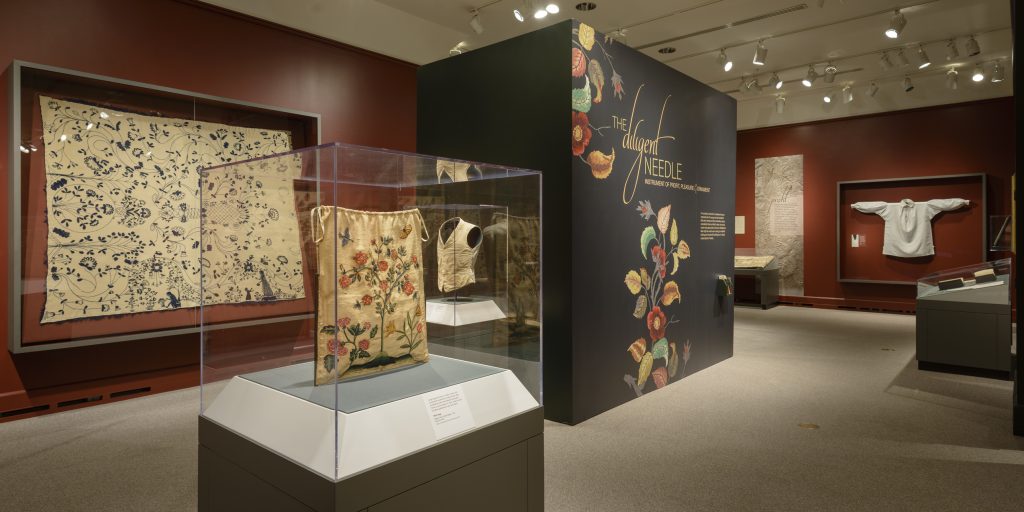The Diligent Needle: Instrument of Profit, Pleasure, and Ornament
For centuries, instruction in needlework was an important part of women’s education. Both plain sewing and fancy embroidery are skills that take considerable time and effort to acquire, and as a result, many women took great pride in their work. Women might use their skill to earn a living through teaching or sewing, to create objects of beauty for themselves and for others, or to embellish clothing and household furnishings.
This exhibition showcases the evolution of needlework and the prominent role it played in women’s lives during the 17th through 19th centuries. It opens with the diligence and skill required to learn and excel at needlework and delves into the various applications of the skill with sections on diligence, profit, pleasure, and ornament, featuring stunning visual examples:
Diligence
Samplers diligently worked on in day and boarding schools are the best documented examples of a girl’s education, but needlework skills were also learned at home, where women of all ages too part in the needlework activities of the household.
Profit
Women could use their skill with a needle to generate extra income or support themselves and their families. Some women, known as mantua makers, milliners or tailoresses, created fine dresses and other clothing, others taught embroidery or offered their skill in decorating clothing and furnishings, while others used the skill for plain sewing, mending and hemming.
Pleasure
Not everyone loved embroidery, but those who did would continue to develop their skill and artistry throughout their life.
Ornament
Those skillful with a needle often used their talent to embellish their own clothing, accessories, and textile furnishings.
Image courtesy of Winterthur, Delaware, USA
